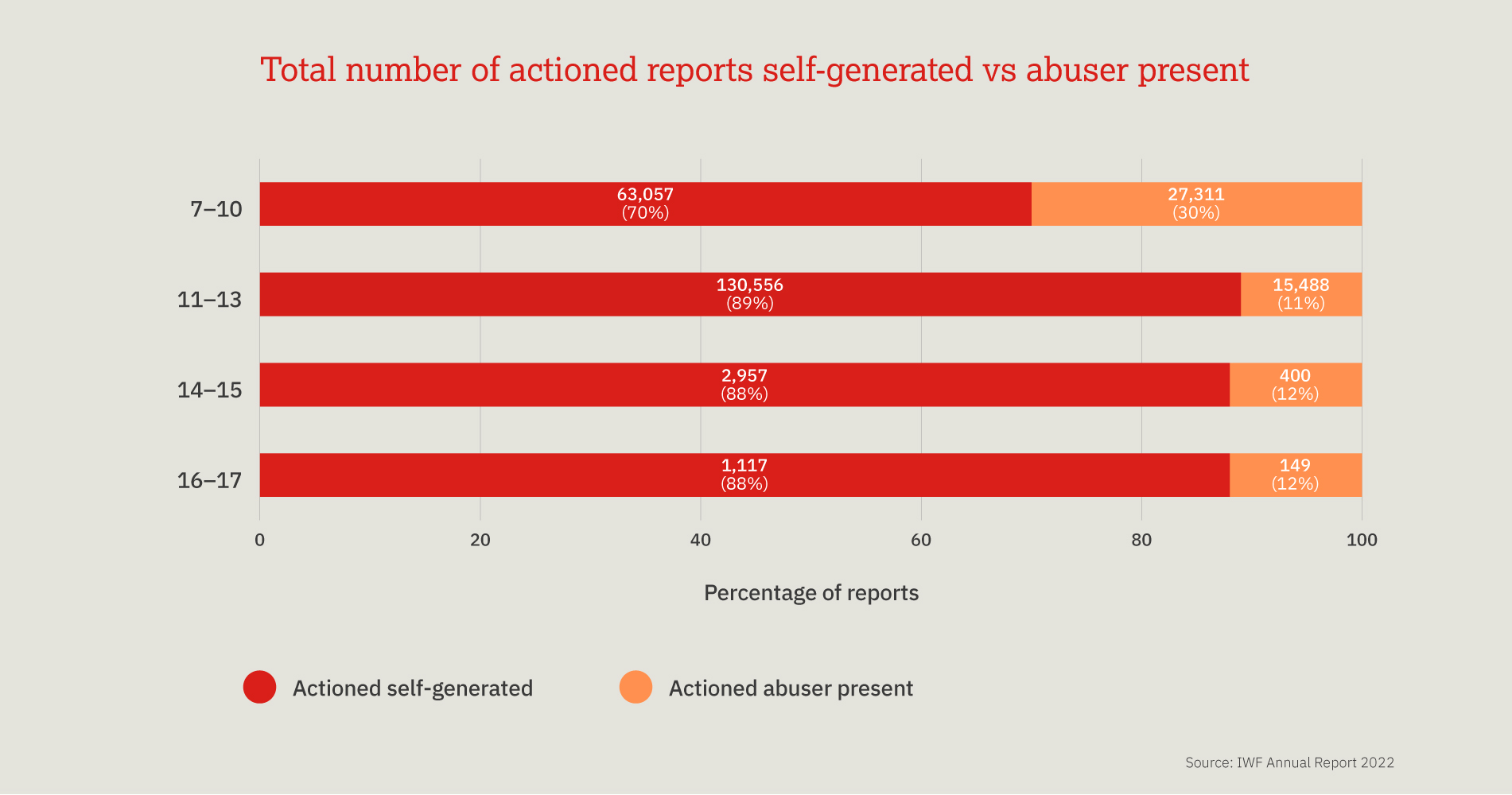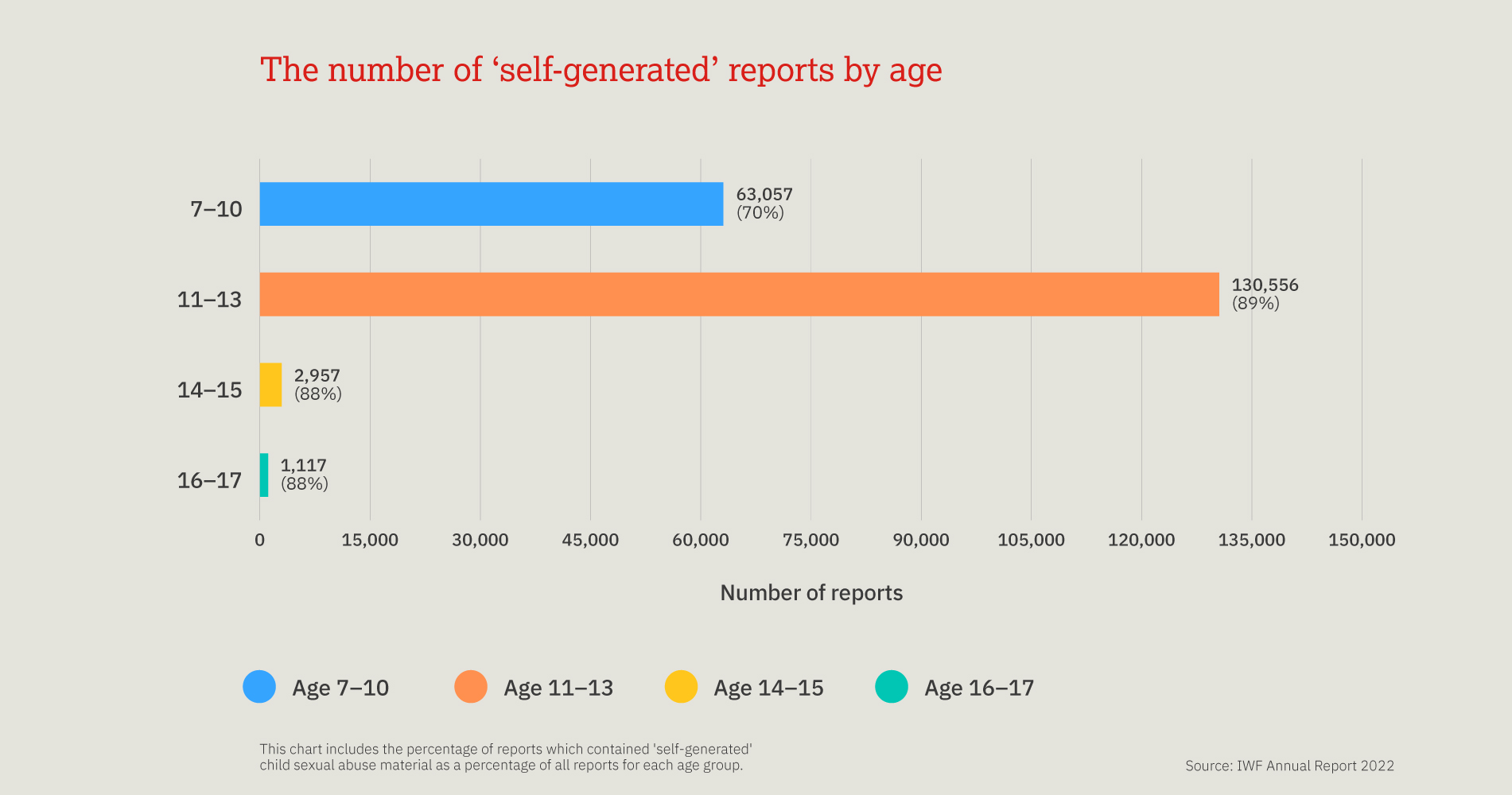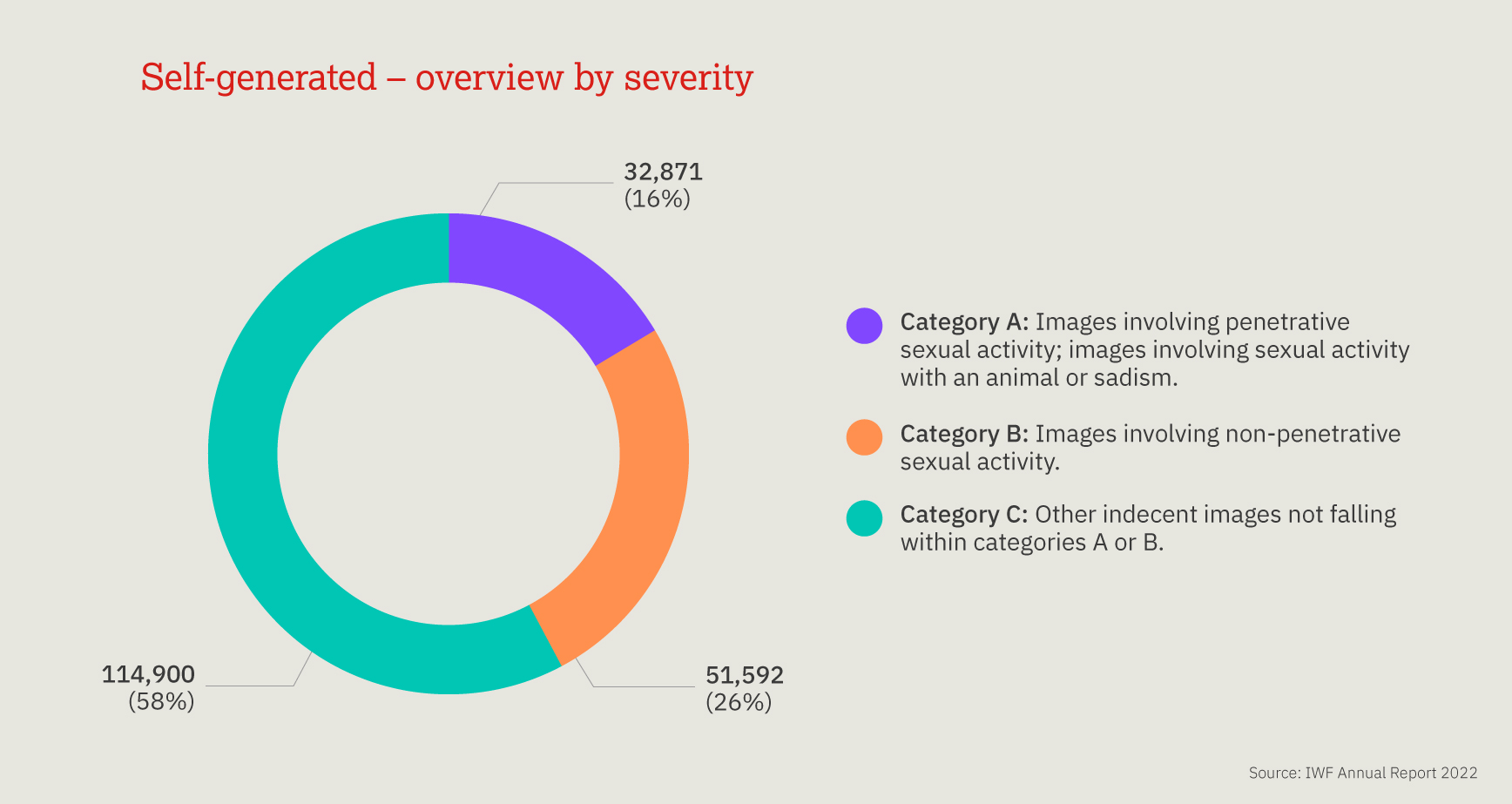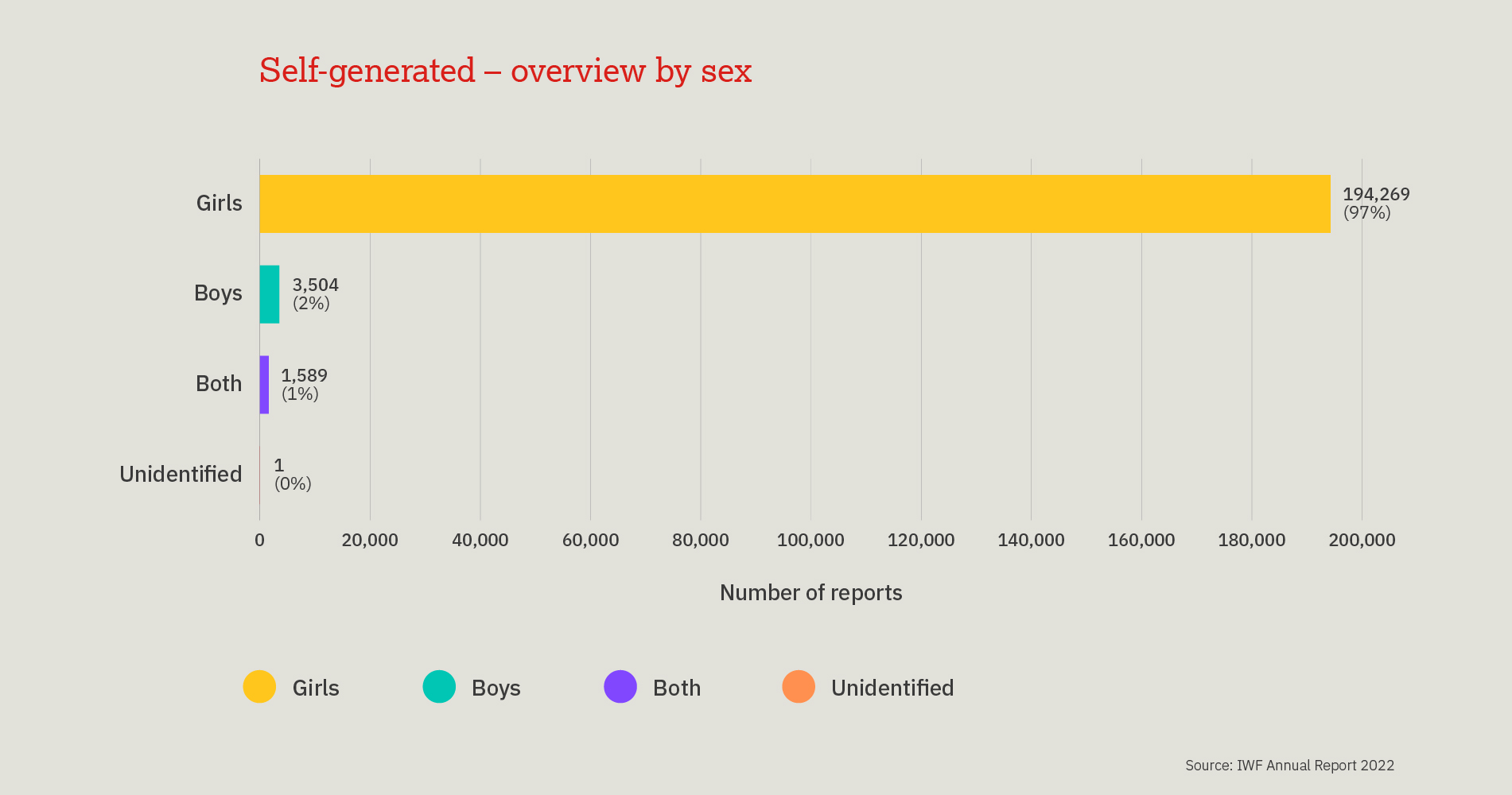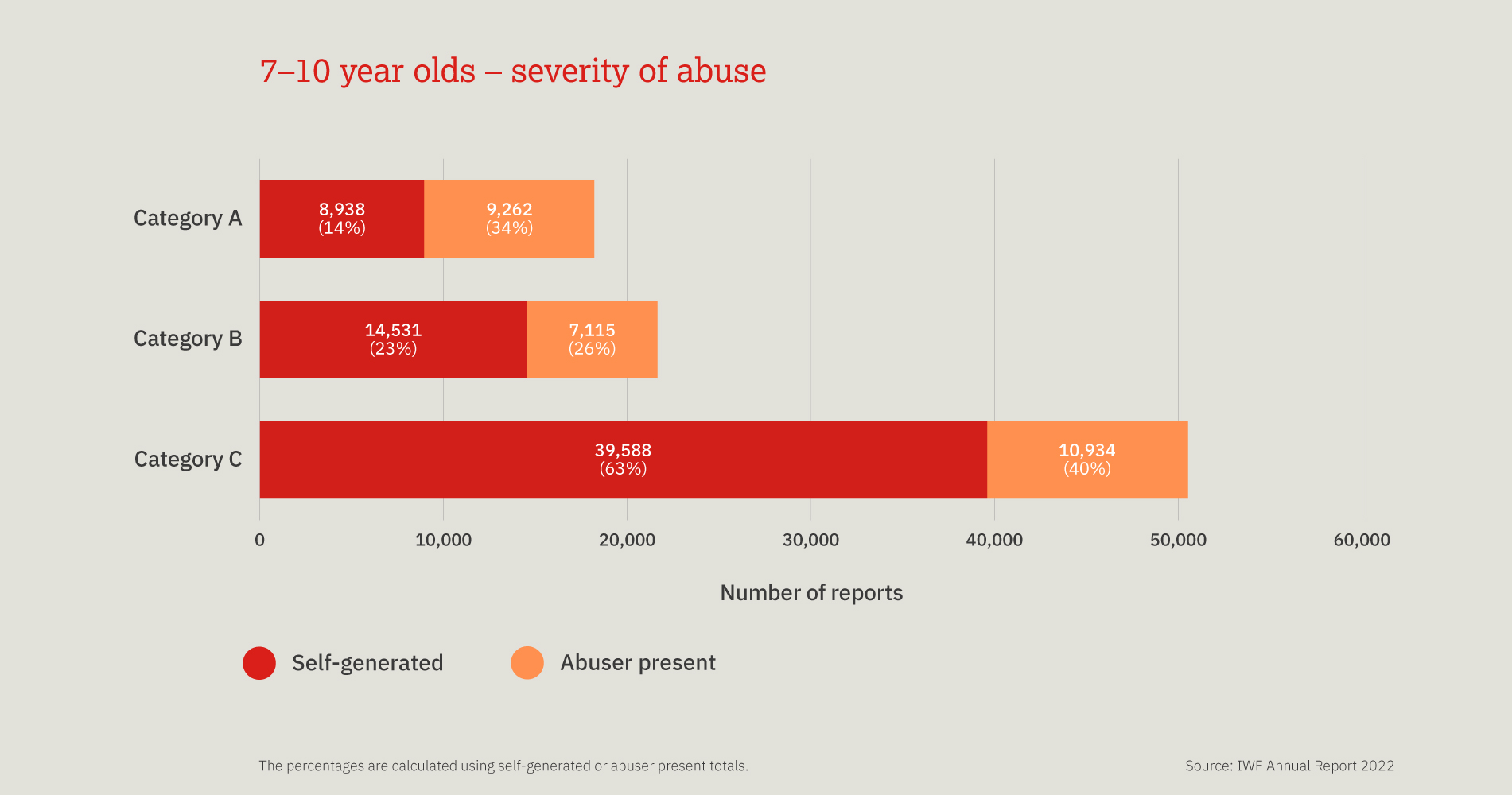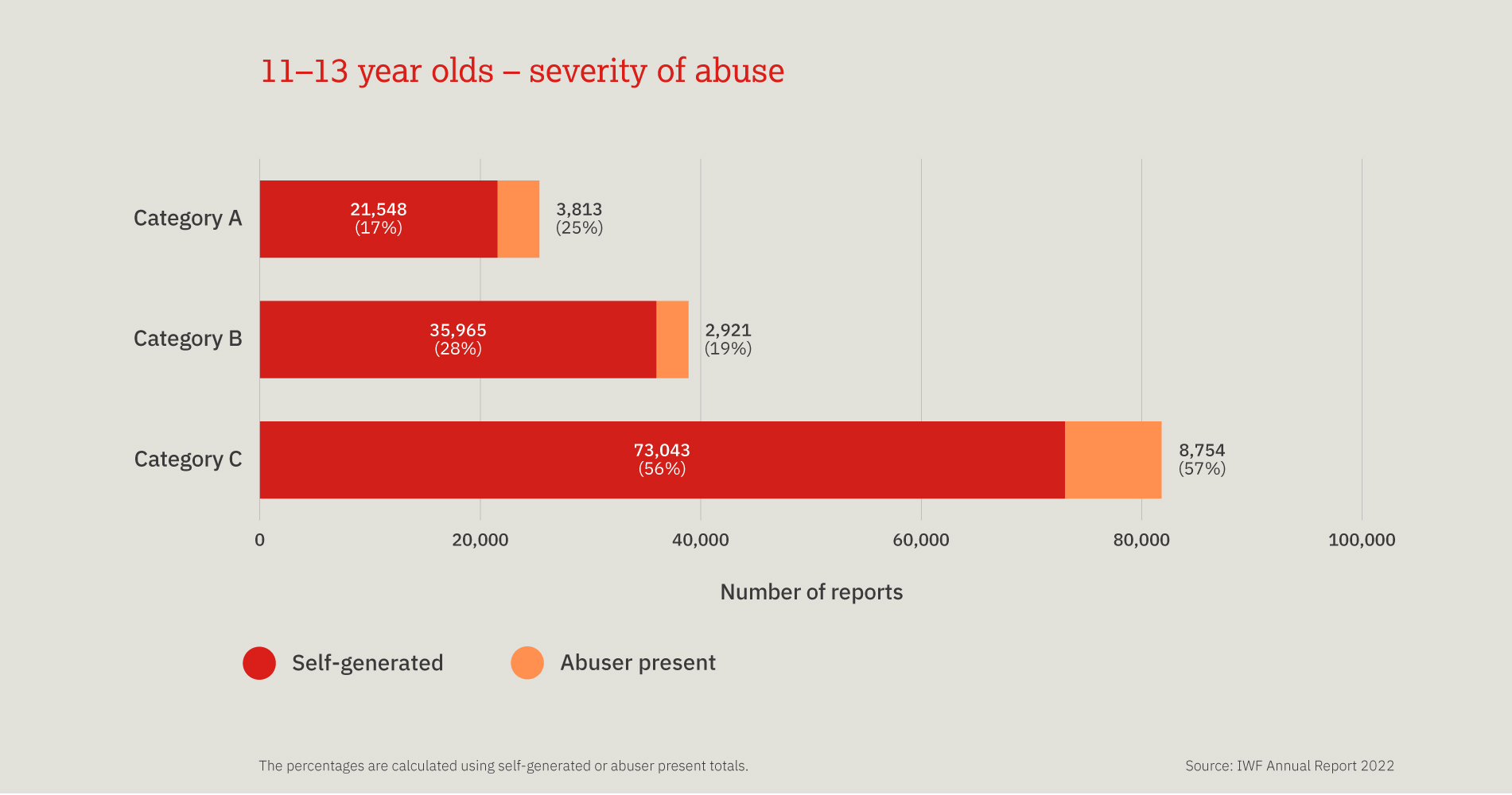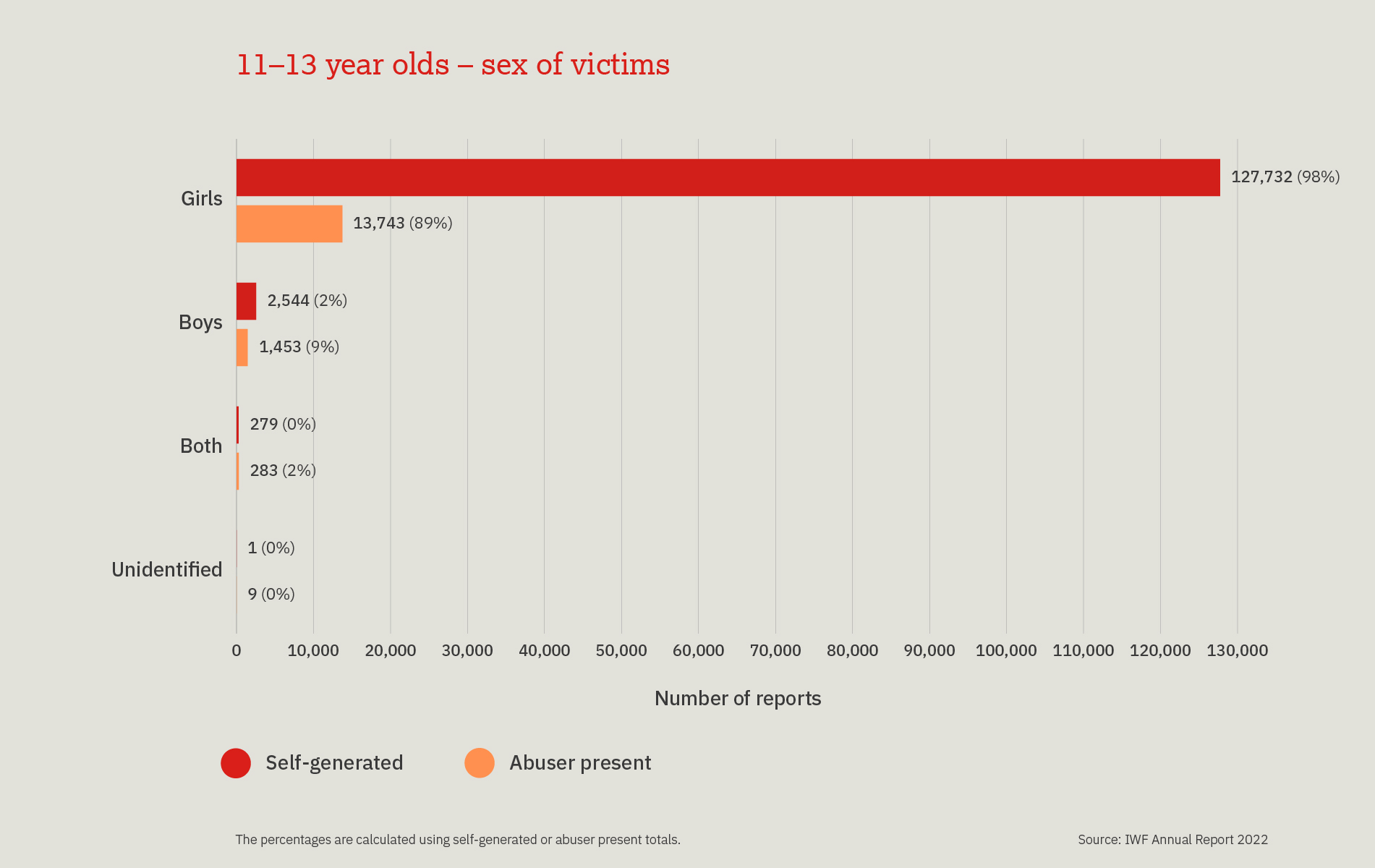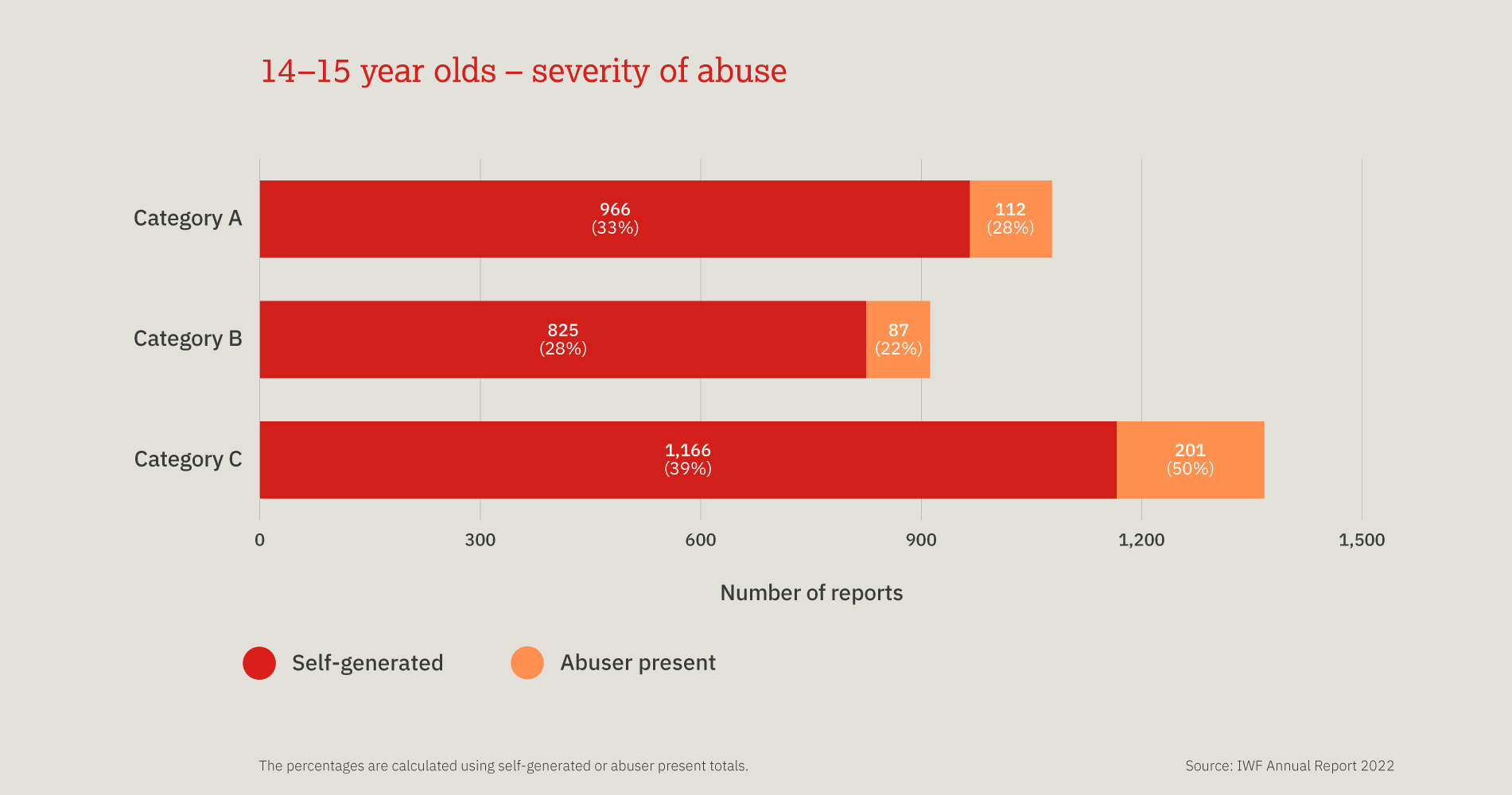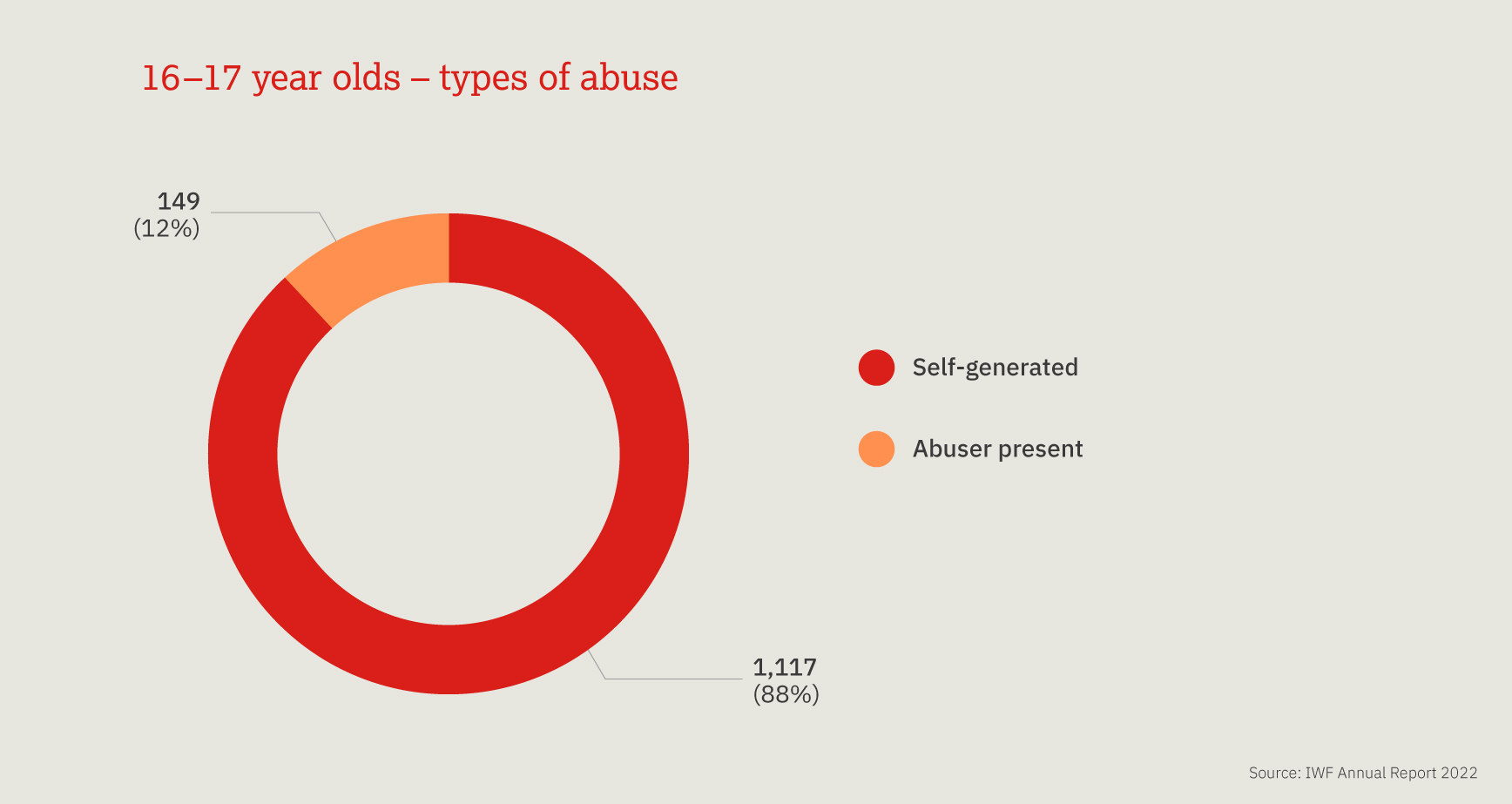In 2022, we continued to see a high proportion of ‘self-generated’ imagery. These are child sexual abuse images and videos created using smartphones or webcams and then shared online. In some cases, children are groomed, deceived or extorted into producing and sharing a sexual image or video of themselves by someone who is not physically present in the room with the child. These images are most often taken in a home setting – a child’s bedroom, or a bathroom.
A note on terminology:
We regard the term ‘self-generated’ child sexual abuse as an inadequate and potentially misleading term which does not fully encompass the full range of factors often present within this imagery, and which appears to place the blame with the victim themselves. Children are not responsible for their own sexual abuse. Until a better term is found, however, we will continue to use the term ‘self-generated’ as, within the online safety and law enforcement sectors, this is well recognised.
In our charts, and explanations in this section, we have also used the term ‘abuser present’ to describe images and videos which are ‘not “self-generated”’. Please note that ‘abuser present’ means that we assessed this content as being created when the abuser was physically present in the room with the victim/s or their likeness, but this does not necessarily mean that the abuser was depicted in the imagery itself.
Trends
Children aged 11-13 continue to appear most frequently in ‘self-generated’ imagery, as in previous years. We observed a steep increase, however, in the proportion of this type of imagery including children aged 7-10 in 2022, up 129% from 2021.
- Of the 255,571 webpages actioned during 2022, over three quarters (199,363 or 78%) were assessed as containing ‘self-generated’ imagery. This is a 6 percentage point increase on 2021 when 72% of actioned reports (or 182,281) were remote-captured.
- This represents a 9% increase in ‘self-generated’ reports from 2021 to 2022 in terms of the number of actioned webpages.
